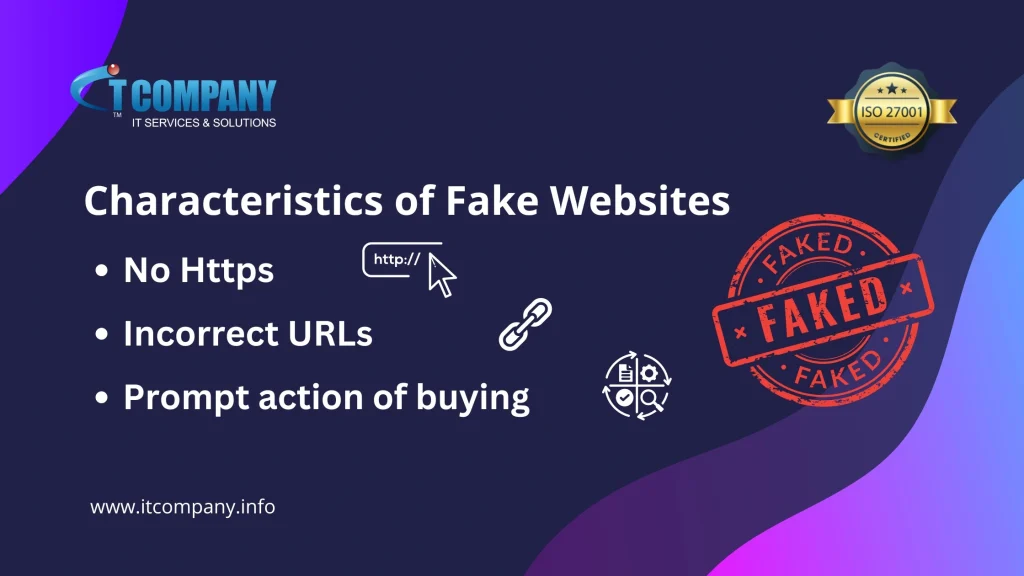
Table of Contents
ToggleIntroduction
The answer to the question “Could someone hack your password by creating a fake website ” is Yes. Hackers can indeed steal your password using a fake website. They often create a replica of a legitimate site and prompt you to reset your password. The fake site may have subtle differences in the URL or design that are hard to notice.
When you enter your credentials, they are captured by the attackers. Always double-check the URL and ensure you’re on a secure, authentic site before entering sensitive information, but staying vigilant can help protect your personal information from such phishing schemes.

What is a Fake Website?
Fake websites, also known as phishing websites, are designed to mimic legitimate sites to steal sensitive information. They replicate the design, structure, and branding of real websites, including similar URLs with minor modifications, logos, and layouts.
Common tactics that hackers use include creating convincing login pages, using urgent or tempting messages to prompt quick action, and disguising links to redirect users to fraudulent sites.
Therefore, in order to distinguish fake sites, look for the absence of HTTPS, spelling mistakes, and incorrect URLs. For that reason, it is highly recommended to use secure connections and verify website details to protect yourself from these vulnerabilities.
These URLs often use subtle misspellings or variations to trick users into thinking they are visiting legitimate sites. Always verify the URL carefully before entering any sensitive information.
List of 20 Fake Websites
Here are list of example URLs that reflect how hackers might create fake websites.
Note: These are not actual phishing sites as google bans such sites. These are meant for creating a gist as how hackers can trick your mind with words.
| Real Website | Fake Website |
| www.google.com | www.g00gle.com |
| www.facebook.com | www.faceb00k.com |
| www.paypal.com | www.paypa1.com |
| www.amazon.com | www.amzon.com |
| www.bankofamerica.com | www.banckofamerica.com |
| www.microsoft.com | www.microsofft.com |
| www.youtube.com | www.y0utube.com |
| www.ebay.com | www.e-bay.com |
| www.apple.com | www.appleid.com |
| www.twitter.com | www.twtter.com |
| www.instagram.com | www.instagramm.com |
| www.linkedin.com | www.linked1n.com |
| www.netflix.com | www.netfliix.com |
| www.spotify.com | www.spotifly.com |
| www.reddit.com | www.rediit.com |
| www.whatsapp.com | www.whattsapp.com |
| www.yahoo.com | www.yah0o.com |
| www.pinterest.com | www.pinterestt.com |
| www.dropbox.com | www.dropb0x.com |
| www.airbnb.com | www.airbnn.com |
These URLs often use subtle misspellings or variations to trick users into thinking they are visiting legitimate sites. Always verify the URL carefully before entering any sensitive information.
List of 20 Emails of Fake Websites
Here are 20 examples of fake or phishing email addresses that illustrate common tactics used by attackers to deceive users:
| Real Email | Fake Email |
| support@gmail.com | support@gnail.com |
| admin@paypal.com | admin@paypa1.com |
| info@amazon.com | info@amzon.com |
| security@facebook.com | security@f4cebook.com |
| service@apple.com | service@applied.com |
| noreply@google.com | noreply@g0ogle.com |
| help@ebay.com | help@e-bay.com |
| account@microsoft.com | account@microsofft.com |
| verify@linkedin.com | verify@linked1n.com |
| contact@amazon.com | contact@amaz0n.com |
| update@facebook.com | updated@faceb00k.com |
| alert@paypal.com | alert@paypal.co |
| admin@yahoo.com | admin@yaoo.comm |
| info@skype.com | info@skyp.com |
| support@itunes.com | support@i-tunes.com |
| help@tumblr.com | help@tumbl.c0m |
| noreply@youtube.com | noreply@y0utube.com |
| security@ebay.com | security@ebay-au.com |
| verify@twitter.com | verify@twitter.co |
| account@bankofamerica.com | account@bankofam3rica.com |
These fake email addresses often include small changes or misspellings to mimic legitimate sources. Always scrutinize email addresses carefully and be wary of unexpected communications asking for sensitive information.
How is Your Data Stolen?
Step 1:
1. Impersation of Legitimate Site
In the first step hackers create convincing replicas as shown in list of fake websites. These sites often have URLs that are very similar to legitimate websites. But remember, they have the slightest discernible differences that cannot be noticed at first.
Step 2:
2. Phishing Techniques
In the second step, they distribute fake URLs and links resources across various channels including emails, messages and ads etc. This fake information always comes up with enticing deals and urgency of buying. If someone clicks, the user is redirected to the fake website which is purely designed to capture their credentials.
Step 3:
3. Data Collection
In the third step, hackers immediately capture your password and other credentials. Meanwhile, they also use keylogger or other malware to collect more details. This information is easily available for any fraudulent or criminal activities and finally sold on the dark web.
Conclusion
Protecting yourself from phishing attacks is crucial. Always verify the authenticity of a website’s URL by looking for unusual characters or misspellings. Ensure the site uses HTTPS and has a valid SSL certificate. Watch for other red flags like poor design, odd requests, and grammatical errors.
Vigilance is key in preventing password phishing. It is highly recommended to consider buying services from ISO 27001 certified company – IT Company. We provide robust protection against all cyber threats and malware. Are you ready to take the next step in securing your digital presence?
FAQs
Can I Get Hacked by Going to a Website?
How Do Hackers Get Your Password?
Can a Website Steal My Saved Passwords?
Can Someone Hack Your Phone Through a Website?
What are the Five Common Signs of a Malicious Website?
Look for misspellings, extra characters, or suspicious domain extensions in the URL.
Lack of HTTPS:
A missing “https://” in the URL or an absence of a padlock icon indicates the site may not be secure.
Poor Design and Errors:
Noticeable poor-quality design, broken links, and frequent grammatical errors can signal a fraudulent site.
Unexpected Pop-ups and Ads:
Excessive or aggressive pop-ups and ads, especially those that prompt you to download software or enter personal information, are red flags.
Urgent or Enticing Messages:
Be wary of sites that use urgent or tempting messages to prompt immediate action, such as “You’ve won a prize!” or “Your account is at risk!”